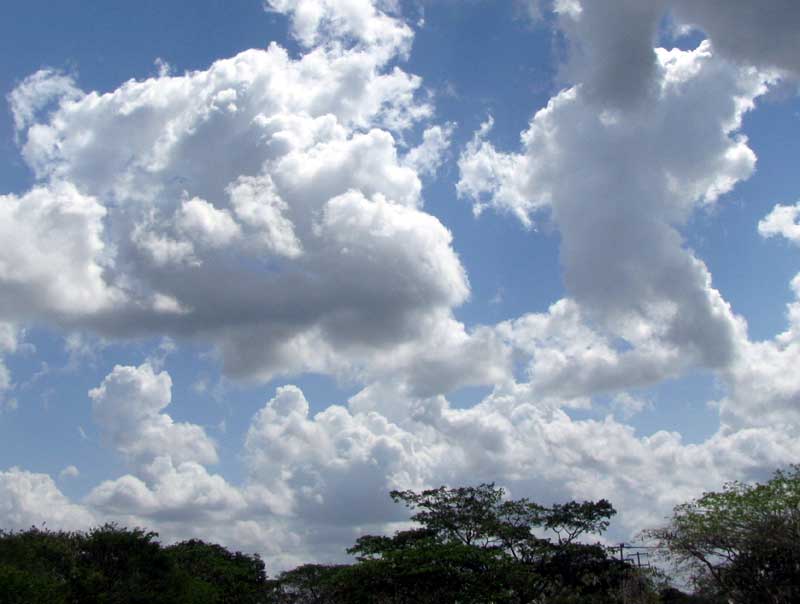Excerpts from Jim Conrad's
Naturalist Newsletter

from the April 3, 2011 Newsletter issued from Hacienda Chichen Resort beside Chichén Itzá Ruins, central Yucatán, MÉXICO; limestone bedrock, elevation ~39m (~128ft), ~N20.676°, ~W88.569°
CUMULUS MEDIOCRIS CLOUDS
Last week we looked at small, fluffy, slowly moving cumulus clouds that often form during fair weather and vanish when the sun goes down. They were called Cumulus humilis clouds. This week we look at the kind of cumulus clouds that form when weather is a little more unsettled, when there's definite vertical buildup inside the clouds, but, still, there's not enough turbulence or vertical buildup for the clouds to produce rain. These larger, more jagged clouds are called Cumulus mediocris clouds, and you can see some photographed last weekend over a soccer field in Pisté above.
The "mediocris" in the name means "moderate." If those clouds had been considerably larger with more vertical buildup in them, maybe even producing a shower or two, they'd have been Cumulus congestus. In other words, Cumulus mediocris is the transition cloud between Cumulus humilis and congestus.
Up North Cumulus mediocris clouds are thought of as common in advance of a cold front or in otherwise unstable atmospheric conditions. If they're present in the morning or early afternoon, a good guess would be that by late in the day a storm might develop.
However, last Sunday our Cumulus mediocris clouds formed at mid morning after our typical east-to-west-flowing winds coming in off the Caribbean beyond Cancún were replaced by hot winds gushing up from the south, from hot lowland Chiapas and Guatemala. In the late afternoon suddenly the wind flipped back from out of the east, it cooled off nicely, our clouds disintegrated, and the sky grew cloudless. Down here, Northern ideas of what clouds mean often are wrong.